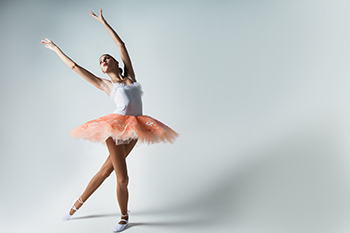Ballet Foot and Ankle Injuries

Ballet is a demanding art form that requires precision, strength, and flexibility. However, the repetitive movements and extreme positions often place dancers at risk of foot, toe and ankle injuries. Open and closed kinetic chains are terms used to describe how the body moves during certain activities. In an open kinetic chain, one part of the body moves while the rest remains stationary, like in a leg extension. In contrast, a closed kinetic chain involves movements where multiple parts of the body work together, such as in a squat. Ballet dancers are particularly prone to specific conditions, including bunions, metatarsal injuries, and ankle pain. Bunions occur when pressure from pointed shoes causes the big toe to deviate. Metatarsal injuries, such as stress fractures, are common due to the intense impact on the feet. Ankle pain often arises from repetitive stress or improper alignment. If you are have foot or ankle pain or have sustained an injury from dancing, it is suggested that you consult a chiropodist who can treat various lower extremity conditions.
Injuries to the foot and ankle are very common among athletes. If you have experienced an injury, please consult with one of the specialists from Thornhill Foot Clinic. Our chiropodists will assess your condition and provide you with quality foot and ankle treatment.
Common Injuries Among Athletes:
Achilles tendon injuries
Ankle strains or sprains
Plantar fasciitis
Fractures
Turf toe
Joint dislocations
Sever’s disease
Morton’s neuroma
Symptoms
Symptoms will depend on the cause and severity of the injury. Common symptoms for a foot or ankle injury include pain, swelling, tenderness, bruising, a reduced range of motion, and difficulty bearing weight or walking on the affected foot or ankle.
Diagnosis
Sports injuries are typically diagnosed after carefully examining the affected foot or ankle. This includes moving the injured area to test its range of motion. Medical history will need to be provided, as well as detailed information about how the injury occurred. Imaging studies, such as X-rays or MRIs, may be used to confirm or rule out certain diagnoses.
Treatment
Just like symptoms, treatment will depend on the type of injury and its severity. Initial treatment for many sports injuries is aimed at controlling inflammation and promoting the healing response. The acronym R.I.C.E is a helpful guide to implement for most acute injuries. This method involves resting, icing, compressing, and elevating the affected foot or ankle. In addition, anti-inflammatory medications may be administered and orthotic devices may be prescribed. For more severe injuries, surgery may be required. Lastly, rehabilitation or physical therapy may be needed to gain full functionality in the afflicted area.
If you have any questions, please feel free to contact our office located in . We offer the newest diagnostic and treatment technologies for all your foot care needs.
